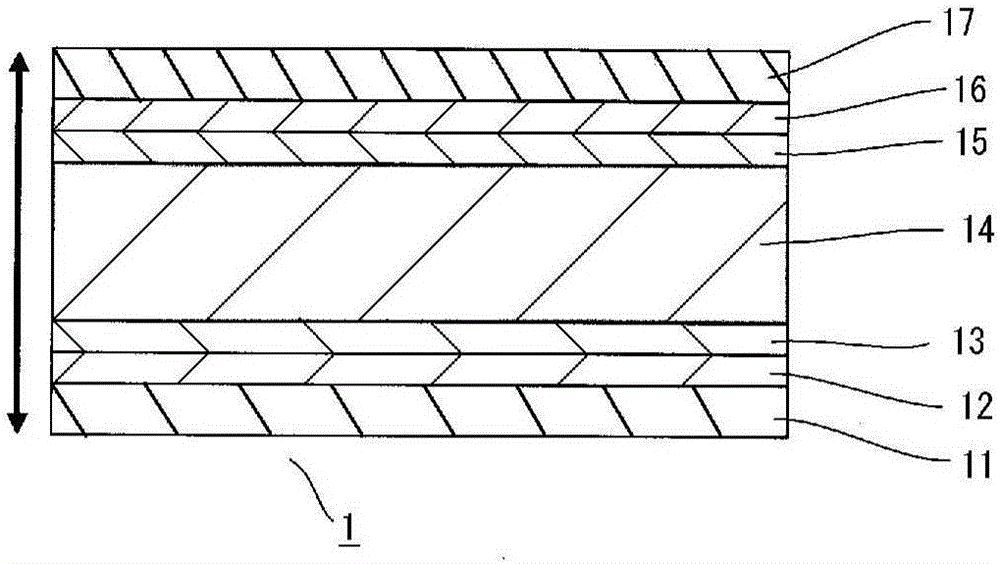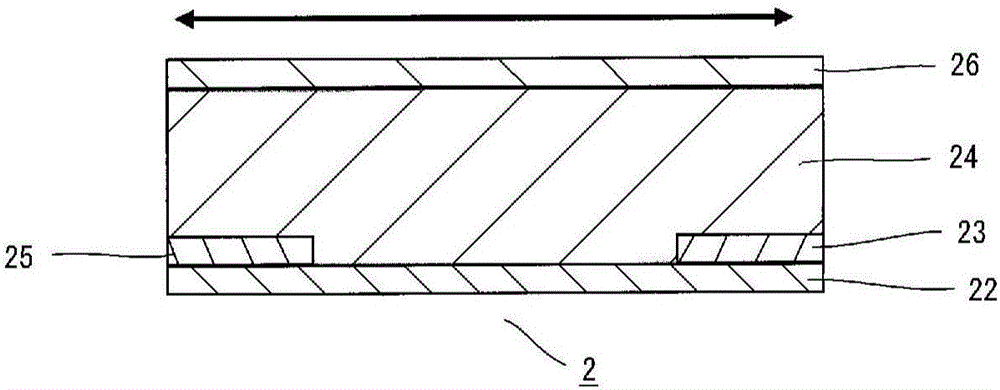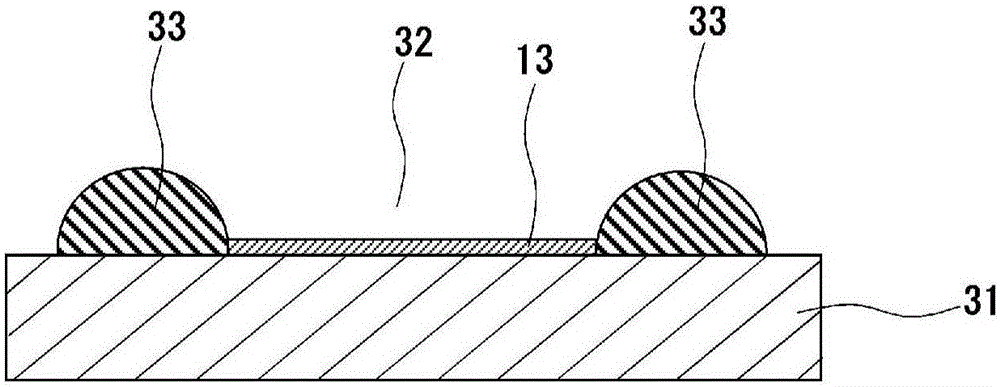Method for manufacturing thermoelectric conversion element and method for producing dispersion for thermoelectric conversion layers
A technology of thermoelectric conversion and manufacturing method, which is applied in the manufacture/processing of thermoelectric devices, and lead wire materials of thermoelectric device nodes, etc., can solve the problems of poor dispersion of dispersion medium, etc. Excellent thermoelectric conversion performance and excellent dispersibility
- Summary
- Abstract
- Description
- Claims
- Application Information
AI Technical Summary
Problems solved by technology
Method used
Image
Examples
preparation example Construction
[0313] The thermoelectric conversion performance of the thermoelectric conversion element can be improved by using a conjugated polymer together with a non-conjugated polymer in the preparation of the dispersion for the thermoelectric conversion layer. The mechanism is not yet clear, but it is speculated to be due to: (1) the gap between the highest occupied molecular orbital (HOMO; Highest Occupied Molecular Orbital) energy level and the lowest unoccupied molecular orbital (LUMO; Lowest Unoccupied Molecular Orbital) energy level of the non-conjugated polymer The (energy band gap) is wide, so considering that the carrier concentration in the conjugated polymer can be kept moderately low, the Seebeck coefficient can be kept at a high level compared with a system that does not contain a non-conjugated polymer; ( 2) On the other hand, the coexistence of conjugated polymers and nano-conductive materials can form a transport path for carriers and maintain high conductivity. That is...
Embodiment 1 and comparative example 1
[0558] 1. Preparation of dispersion 101 for thermoelectric conversion layer
[0559] To 100 mg of poly(3-octylthiophene-2,5-yl) and 100 mg of single-walled carbon nanotube "ASP-100F" (trade name, manufactured by Hanwha-chemical Co., Ltd.) (converted to the mass of single-walled carbon nanotubes, the following 20 mL of o-dichlorobenzene was added to the mixture, and premixed at 20° C. for 15 minutes using a mechanical homogenizer “T10basic” (manufactured by IKA Corporation) to obtain a premix 101. The solid content concentration of this premix 101 was 1.0 w / v% (the CNT content in the solid content (the same applies hereinafter) was 50% by mass).
[0560] Next, for this premix 101, the distance between the inner peripheral surface of the tubular jacket and the outer peripheral surface of the stirring blade was adjusted to 2 mm using a thin-film rotary high-speed mixer "FILMIX40-40" (manufactured by Primix Co., Ltd. (hereinafter the same). ), in a constant temperature layer at 1...
Embodiment 2 and comparative example 2
[0664] 1. Preparation of dispersion 201 for thermoelectric conversion and thermoelectric conversion layer 201 and production of thermoelectric conversion element 201
[0665] In the preparation of the dispersion 101 for the thermoelectric conversion layer, as the nanoconductive material, instead of single-walled carbon nanotubes, multilayered carbon nanotubes "VGCF-X" (trade name, average diameter 150 nm, average length 10 μm to 20 μm, Manufactured by Showa Denko Co., Ltd.), in the same manner as the thermoelectric conversion layer dispersion 101, a premix 201 (solid content concentration: 1.0 w / v% (CNT content: 50% by mass)) and a thermoelectric conversion layer dispersion were prepared. 201 (solid content concentration: 1.0 w / v% (CNT content: 50% by mass)).
[0666] In addition, in the preparation of the thermoelectric conversion layer 101 and the production of the thermoelectric conversion element 101, the dispersion for the thermoelectric conversion layer 201 was used inst...
PUM
| Property | Measurement | Unit |
|---|---|---|
| viscosity | aaaaa | aaaaa |
| diameter | aaaaa | aaaaa |
| length | aaaaa | aaaaa |
Abstract
Description
Claims
Application Information
 Login to View More
Login to View More - R&D
- Intellectual Property
- Life Sciences
- Materials
- Tech Scout
- Unparalleled Data Quality
- Higher Quality Content
- 60% Fewer Hallucinations
Browse by: Latest US Patents, China's latest patents, Technical Efficacy Thesaurus, Application Domain, Technology Topic, Popular Technical Reports.
© 2025 PatSnap. All rights reserved.Legal|Privacy policy|Modern Slavery Act Transparency Statement|Sitemap|About US| Contact US: help@patsnap.com



